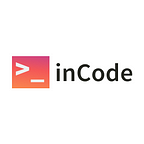Unveiling the Perfect Landing Page Structure
Have you ever come across someone’s landing page structure and thought, “I need one too”? When you tried to create your content, you realized you didn’t know where to begin or what to write exactly. To prevent getting lost in such situations, we will describe a typical landing page structure. We hope this information will be valuable to you.
Some general rules:
- Avoid overloading the landing page with excessive information.
- Use text, images, and icons moderately. Select pictures that align with the content’s meaning and complement it effectively.
- Write concisely and clearly, avoiding the use of complex terms.
- Utilize good quality and high-resolution images to boost the overall visual appeal.
- Highlight the key aspects visually, ensuring buttons and important text accents stand out appropriately. If you describe some steps, make sure the sequence of actions is clearly visible.
- Limit the use of flashy red colors and exclamation points. Instead, explore other methods to capture the user’s attention effectively.
- Base design and format decisions on the preferences of your target audience, rather than your own or your friends’. Understanding your audience’s preferences is crucial for your success.
Header and Menu
Ensure your landing page header takes center stage with a prominent display of your logo and create easy-to-use links that guide visitors to different sections of your website. Don’t have a logo yet? No worries! You have two excellent choices: leverage Midjourney’s creative tools to craft one yourself or, for even greater impact, enlist the expertise of a professional agency to develop a unique and polished logo that perfectly represents your business.
First Screen — The Most Crucial Element
The first screen is the most critical part of your landing page. It must deliver the key information concisely and in a visually appealing format that entices visitors to keep scrolling. Remember, people’s attention spans are short, so make every word and image count.
- Use a meaningful image that aligns with your product or service. For personal sites, consider placing your photo here.
- Keep the title short and to the point, capturing the main purpose of your page in 5–6 words.
- The description should be brief, explaining the title and catering to those who tend to skim content.
- Include a clear call-to-action (CTA) button that leads visitors to the essence of your offer.
About You — Build Trust
Following the first screen, you’ll have to build trust of your audience. Include certificates, credentials, and relevant data that highlight your competence and experience.
About Your Product/Offer — Understand Your Audience
Know your target audience and their pain points to craft a compelling description of your product or service. Incorporate measurable indicators, such as the duration of a training program or financial growth results. Clearly communicate what you offer and the benefits your audience can expect.
Portfolio/Examples of Work — Showcase Your Expertise
Display relevant case studies and examples of your work to inspire confidence in potential customers. Opt for a balanced number of images in this section, and consider using a “see more” button for additional examples.
Reviews and Recommendations — Leverage Social Proof
Real-life testimonials with avatars or video reviews from satisfied customers will enhance your credibility and reassure visitors about your offerings.
Work Process — Guide Visitors to Action
Having gained the trust of your audience through the previous sections, describe your work process clearly. Use drop-down blocks to hide lengthy text, making it easier for users to consume information. Incorporate infographics to visualize the next steps for users, maintaining a user-friendly and familiar structure.
Price — Present Transparent Pricing
If your services have varying fees, provide a visual comparison. Highlight any bonuses included with certain fees. Place this section towards the bottom of the page, once visitors are already interested and trusting of your brand. Transparent pricing builds confidence and prevents skepticism.
Application Form — Simplify User Interaction
Include the application form directly on the page rather than using pop-up windows. Minimize user actions to improve conversion rates, and avoid potential technical issues associated with pop-ups.
Footer — Essential Legal and Social Information
In the footer, provide necessary legal information, links to your social media profiles, the privacy policy, and relevant copyright details. Ensure compliance with payment system requirements.
By following the steps outlined, you can craft the most effective and high-converting landing page. If you’re collaborating with an agency, this guide will aid you in creating technical tasks and materials to bring your vision to life.
At inCode Systems, we are passionate about web development and UI/UX design. We can help you achieve your business goals and stand out in the competitive online landscape.
Originally published at https://incode-systems.com.
